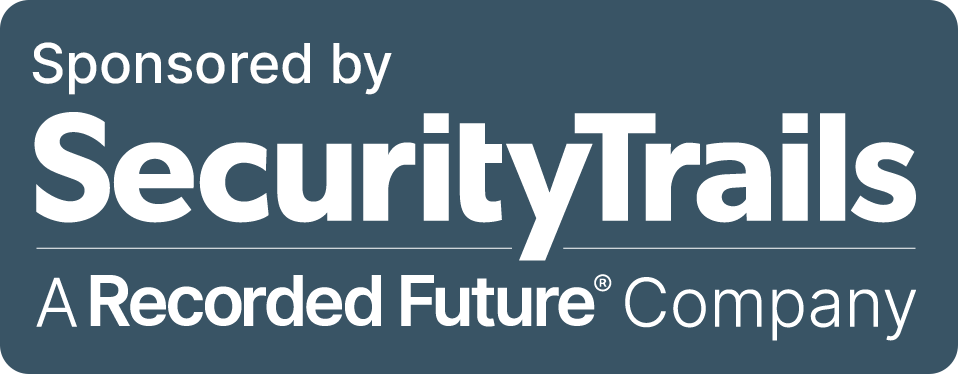blog.dsouthwick.com
Open in
urlscan Pro
174.127.108.195
Public Scan
URL:
http://blog.dsouthwick.com/
Submission Tags: phish.gg anti.fish automated Search All
Submission: On August 02 via api from DE — Scanned from DE
Submission Tags: phish.gg anti.fish automated Search All
Submission: On August 02 via api from DE — Scanned from DE
Form analysis 1 forms found in the DOM
GET http://blog.dsouthwick.com/
<form role="search" method="get" id="searchform" class="searchform" action="http://blog.dsouthwick.com/">
<div>
<label class="screen-reader-text" for="s">Search for:</label>
<input type="text" value="" name="s" id="s">
<input type="submit" id="searchsubmit" value="Search">
</div>
</form>Text Content
D. C. SOUTHWICK
YOU CAME HERE FOR THIS?
Menu Skip to content
* Home
* About
USING FEDORA 37+ AT CERN
Leave a reply
This post is an update to my previous post for Fedora 24.
Much has changed in the past years for Linux at CERN, most notably the surprise
end of support for Centos8. In the wake of this news, and unhappy with the new
re-shuffling of CentOS in the RHEL development pipeline, several open-source
“clones” were created to take the place of the now-EOL CentOS8. CERN, together
with FermiLab, chose Alma linux, which is now available and officially
supported.
Now that the dust has settled we have much more modern options available
(although many experiments are continuing with Centos7 for some time). The
current survey of officially supported releases include:
* Alma/RHEL 9 (5.15 LTS, Python 3.9 LTS)
* Centos Stream 9 (5.15 LTS, Python3.9 incremental)
For those people who need even newer, the process for using Fedora has gotten
even simpler. The default behavior of CERN workstations (as of rhel/cs/alma 9)
is to no longer to set the user $HOME directory to their AFS path, but rather a
local /home/$USER path. This avoids some of the headaches caused by sssd-krb5,
and means that all users need to do to have a “CERN workstation” experience with
Fedora (or Ubuntu, Arch, etc. ) is setup krb5 and AFS.
Setting up Fedora 37+ for use at CERN
Starting from a fresh install, we need the dependencies for AFS and kerberos:
$ dnf install -y krb5-workstation sssd-krb5
$ curl -LO /etc/krb5.conf https://linux.web.cern.ch/docs/krb5.conf
You should now be able to get kerberos tokens with $ kinit username@CERN.CH.
Don’t forget to enable using your tokens with SSH:
$ cat <<EOF >> ~/.ssh/config
GSSAPITrustDns yes
GSSAPIAuthentication yes
GSSAPIDelegateCredentials yes
EOF
Now for AFS. There’s been various efforts to make Fedora rpms available via copr
or even yum repos directly from openAFS team over the years, but it seems these
are inevitably unmaintained. AFS requires kernel modules, so the only sure-fire
way is to pull the latest source rpm from OpenAFS and build it yourself:
$ dnf install -y rpm-build krb5-devel ncurses-devel pam-devel swig perl-ExtUtils-Embed
$ curl -LO https://openafs.org/dl/openafs/1.8.9/openafs-1.8.9-1.src.rpm
$ rpmbuild --rebuild --define "build_userspace 1" --define "build_modules 0" openafs-1.8.9-1.src.rpm
$ cd ~/rpmbuild/RPMS/x86_64
$ dnf install -y openafs-client-1.8.9-1.fc37.x86_64.rpm openafs-krb5-1.8.9-1.fc37.x86_64.rpm dkms-openafs-1.8.9-1.fc37.x86_64.rpm openafs-1.8.9-1.fc37.x86_64.rpm
$ echo "cern.ch" > /usr/vice/etc/ThisCell
$ systemctl enable --now openafs-client
Here, we install the minimal AFS client: openafs, openafs-client, openafs-krb5,
and dkms-openafs. If you really want the static kmod-openafs, you can set define
"build_modules 1" but this is often failing for bleeding-edge kernels. Finally,
try it out:
$ kinit userid@CERN.CH
$ aklog
$ klist
Valid starting Expires Service principal
02/10/2023 11:25:29 02/11/2023 10:45:25 krbtgt/CERN.CH@CERN.CH
02/10/2023 16:17:35 02/11/2023 10:45:25 afs/cern.ch@CERN.CH
See https://linux.web.cern.ch/docs/kerberos-access for full notes
Addendum: Using CERN repo packages to automate the above
Many of the CERN-maintained packages meant for supporting RHEL/Alma can be used
for Fedora as well.
$ cat <<EOF > /etc/yum.repos.d/CERN.repo
[CERN]
name=CentOS-9 Stream - CERN [HEAD]
baseurl=http://linuxsoft.cern.ch/cern/centos/s9/CERN/x86_64
enabled=0
gpgcheck=0
#gpgkey=file:///etc/pki/rpm-gpg/RPM-GPG-KEY-kojiv2
[CERN-testing]
name=CentOS-9 Stream - CERN - testing [HEAD]
baseurl=http://linuxsoft.cern.ch/cern/centos/s9-testing/CERN/x86_64
enabled=1
gpgcheck=0
#gpgkey=file:///etc/pki/rpm-gpg/RPM-GPG-KEY-kojiv2
[CERN-source]
name=CentOS-9 Stream - CERN - source [HEAD]
baseurl=http://linuxsoft.cern.ch/cern/centos/s9-testing/CERN/Source
enabled=1
gpgcheck=0
#gpgkey=file:///etc/pki/rpm-gpg/RPM-GPG-KEY-kojiv2
EOF
As an example, a commonly used helper package is locmap. It’s not directly
install-able, due to the rpm being hard-linked to Alma9’s system python 3.9.
You’ve already seen how to rebuild a source rpm against your newer kernel, so
how about newer python?
$ repoquery --requires locmap
/usr/bin/python3
bind-utils
iproute
krb5-workstation
locmap-plugin-puppet-facts
locmap-plugin-xldap
locmap-release
puppet-afs
puppet-agent >= 1.9
puppet-alternatives
puppet-augeasproviders_core
puppet-augeasproviders_pam
puppet-cernbox
puppet-cernphone
puppet-chrony
puppet-concat
puppet-cvmfs
puppet-eosclient
puppet-firewalld
puppet-inifile
puppet-kerberos
puppet-keytab
puppet-lpadmin
puppet-mailalias_core
puppet-nscd
puppet-postfix
puppet-ssh
puppet-stdlib
puppet-sudo
puppet-systemd
puppet-zoom
python(abi) = 3.9
python3-PyYAML
python3-ldap
python3-netaddr
python3-setuptools
python3.9dist(setuptools)
useraddcern
There’s a couple of options here:
1. We could install this rpm while ignoring all of it’s dependencies, then
manually install them ourselves as needed (tedious)
2. Update the python3 version requested by the rpm (slightly less tedious)
The relevant fix looks like this:
$ dnf download locmap
$ rpmrebuild -enp locmap-*.rpm
This will open your editor to the rpm .spec file. The relevant lines causing our
particular headache are:
Requires: python(abi) = 3.9
Requires: python3.9dist(setuptools)
Comment these lines out (or possibly update them and the install paths to your
system python version (3.11 for fc37.) The resulting rpm is ready for install in
~/rpmbuild/RPMS/noarch/locmap-*noarch.rpm. If you looked further in the spec
file, you’ll see that locmap is essentially a python module like you might
install from Pypi, which installs python3.9 site-package files. So don’t forget
to install python3.9 for use, along with the modules requested by the rpm:
$ dnf install -y python3.9
$ alternatives --install /usr/bin/python3 python3 /usr/bin/python3.9 1
$ python3 -m ensurepip
$ python3 -m pip install pyyaml netaddr pyyaml setuptools
Rinse and repeat for any dependencies. As you can see, it can turn into a
headache, so best avoided if possible.
This entry was posted in Uncategorized on February 10, 2023 by admin.
PRINTING AT CERN
Leave a reply
Using an operating system other than those officially supported, printers can be
added via CUPS.
Example from Fedora 34:
Find your printer from cern’s printservice webpage. Copy the printer ppd from
lxplus and install deps:
sudo dnf install -y cups-lpd system-config-printer
scp lxplus:/etc/cups/ppd/your-printer-name.ppd ~
From here, run system-config-printer and configure a new LPD/LPR printer.
Host: <your-printer-name>.print.cern.ch
Queue: <your-print-name>
then simply accept the rest of the default settings & test print!
This entry was posted in Uncategorized on July 1, 2021 by admin.
ENABLING H264 AND OTHERS ON WINDOWS N INSIDER
Leave a reply
Windows 10 N is essentially the same version as the non-N version, with specific
licensed codecs and other materials excluded. You can install these normally via
the Microsoft Windows Media Feature Packs.
I made the unfortunate mistake of selecting Windows 10 Pro N for a computer, and
being stubborn and not wanting to change the license, I have been continuously
running into problems created when you update early with Windows Insider
program.
So far, Microsoft does not rebuild the media feature packs for insider builds.
Microsoft has not released a script to let you do this yourself (ala source
rebuild for those familiar with Linux).
If you want to use Netflix, youtube, or any other modern web content that
requires these media codecs, you were SOL on Windows 10 N and insider builds.
Until I stumbled across these instructions:
1. Download the latest Windows Media Feature Pack & extract the contents:
* expand -f:* Windows-media-packxx.msu . ; expand -f:* Microsoft-media-featurexx.cab .
2. Copy the following files into Windows/System32:
* mfperfhelper.dll
* msmpeg2vdec.dll
* mf.dll
* mfplat.dll
* evr.dll
1. Install the following registry keys: (copy/paste to .reg file and import by
double-clicking the file)
2. Windows Registry Editor Version 5.00
[HKEY_CLASSES_ROOT\CLSID\{62CE7E72-4C71-4D20-B15D-452831A87D9D}]
@="Microsoft H264 Video Decoder MFT"
[HKEY_CLASSES_ROOT\CLSID\{62CE7E72-4C71-4D20-B15D-452831A87D9D}\InprocServer32]
@="C:\\Windows\\System32\\msmpeg2vdec.dll"
"ThreadingModel"="Both"
[HKEY_CLASSES_ROOT\CLSID\{e79167d7-1b85-4d78-b603-798e0e1a4c67}]
@="MF Media Source Activate"
[HKEY_CLASSES_ROOT\CLSID\{e79167d7-1b85-4d78-b603-798e0e1a4c67}\InProcServer32]
@="C:\\Windows\\System32\\mfcore.dll"
"ThreadingModel"="Both"
This entry was posted in Uncategorized on June 17, 2019 by admin.
USING FEDORA 24+ AT CERN
Leave a reply
> This post has been updated – please see Fedora 37+ here
Updated Spring 2018
It seems RHEL8/CC7 will likely be branched from Fedora27 development, so
hopefully these things will hold for future. Tracking down the sssd bug for
Fedora 26+ was a pain!
—
CERN has decided that future linux releases will be a stock version of centos +
cern repository. This makes things quite simple for anyone who might want to use
fedora, as we are very close to stock system.
ADD CERN REPO
cat>/etc/yum.repo.d/cern.repo << EOF [cern] name=cern baseurl=http://linuxsoft.cern.ch/cern/centos/7/cern/x86_64 enabled=1 gpgcheck=0 EOF
INSTALL KERBEROS AND AFS
INSTALL GOTCHA DEPENDENCIES
ocsinventory-agent -this package is not any longer from default Fedora repos.
Get it here.
# for Fedora 27. See above link for other versions of Fedora
dnf install https://rpm.ocsinventory-ng.org/ocsinventory-release-latest.fc27.ocs.noarch.rpm
INSTALL PACKAGES FROM CERN REPO
* dnf may complain about per(Module::Install) or other perl libraries missing –
these are simply called perl-Module-Install in fedora repos. rpmfind.net is
your friend here.
sudo dnf install CERN-CA-certs cern-get-keytab cern-get-sso-cookie cern-wrappers locmap useraddcern
Now we install everything with dnf. Finally, you can simply follow the cern cc7
instructions and add your cern account native with addusercern afsid
One final note: If you have Fedora 26+, there is a bug from sssd. You need to
add the following line to your /etc/sssd/sssd.conf under [sssd]:
[sssd]
enable_files_domain=false
You can read more about this particular “feature” here
This entry was posted in Uncategorized on July 5, 2016 by admin.
BUILDING KDE (PLASMA) 5 ON RHEL / CENTOS 7
Leave a reply
WITH A FRESH INSTALL OF CENTOS 7 I’M GOING TO TRY AND INSTALL KDE (PLASMA) 5.
For fun, I’ll try and make it available to all users from the /opt/ directory.
According to KDE Developers the reason why Plasma is not available from
repositories is due to missing support for cmake 2.8.12+.
UPDATED – CMAKE 3.5+ is now available in the epel-testing repo! QT5.6 is now
available as well!
SO! STEP1: INSTALL DEPENDENCIES:
yum-config-manager --enable epel-testing
yum install cmake3*, qt5-*
ln -s /usr/bin/cmake3 /usr/bin/cmake
*cmake for centos7 does not install as `cmake’ but cmake3. I do not know why.
Test with “qtdiag” (should return 5.5.1) and “cmake3 -version”(should return
3.5.0)
Cool.
To build latest* we need wayland. New(er) Wayland. Without building yourself
from source, you can get it from jmliger’s copr. Once you have that saved in
/etc/yum.repos.d/ you can simply
yum install wayland*
STEP 2: BUILD KDE*
I chose to use the KDE src-build script to make life easier.
Note: my kdesrc-builrc file was in /opt/kde/sources/kdesrc-build/ and the
contents are as follows:
global
source-dir /opt/kde/sources
build-dir /opt/kde/build
kdedir /opt/kde/install
log-dir /opt/kde/logs
git-repository-base kde-projects kde:
cmake-options -DCMAKE_BUILD_TYPE:STRING=debug
cxxflags -pipe -DQT_STRICT_ITERATORS -DQURL_NO_CAST_FROM_STRING -DQT_NO_HTTP -DQT_NO_FTP -Wformat -Werror=format-security -Werror=return-type -Wno-variadic-macros -Wlogical-op -Wmissing-include-dirs -std=c++11
make-options -j4
ignore-kde-structure true
stop-on-failure true
end global
include /opt/kde/sources/kdesrc-build/kf5-frameworks-build-include
include /opt/kde/sources/kdesrc-build/kf5-workspace-build-include
In addition to the above official instructions, I needed bzr, and some other
additional *-devel libraries (build with –debug flag to see what you’re missing)
Working KDE/Plasma 5.21 on Centos 7.2
This entry was posted in Uncategorized on July 31, 2015 by admin.
Search for:
RECENT POSTS
* Using Fedora 37+ at CERN
* Printing at CERN
* Enabling h264 and others on Windows N insider
* Using Fedora 24+ at CERN
* Building KDE (Plasma) 5 on RHEL / CentOS 7
RECENT COMMENTS
ARCHIVES
* February 2023
* July 2021
* June 2019
* July 2016
* July 2015
CATEGORIES
* Uncategorized
META
* Log in
* Entries feed
* Comments feed
* WordPress.org
Proudly powered by WordPress

